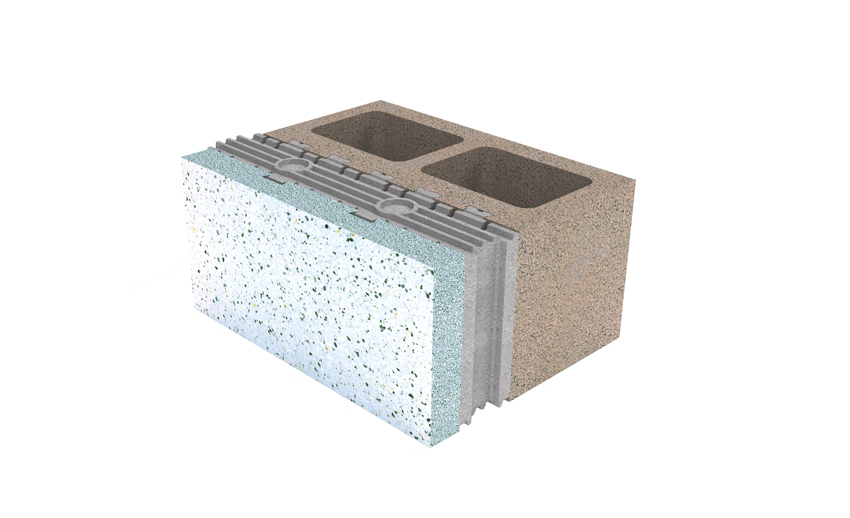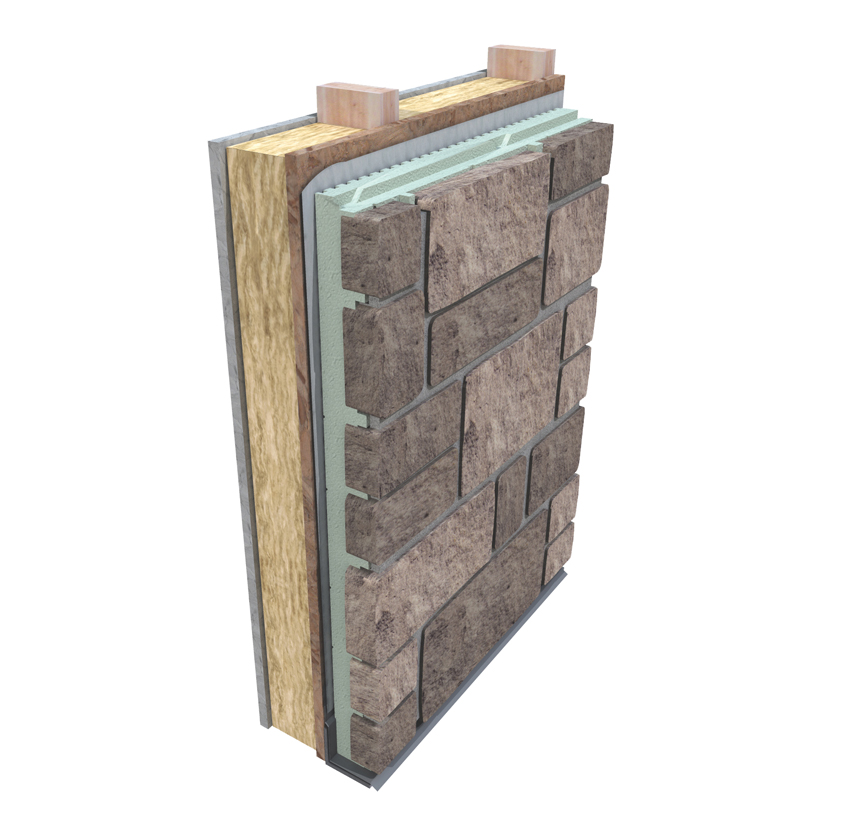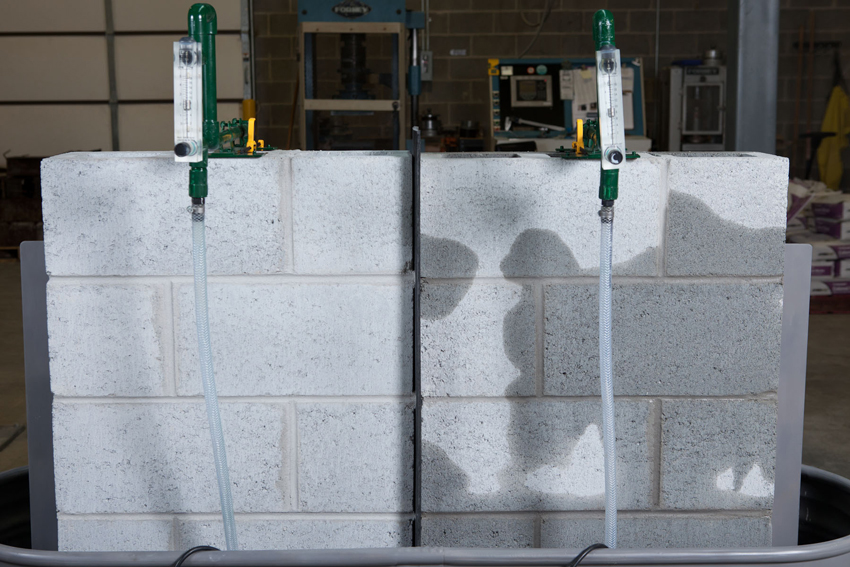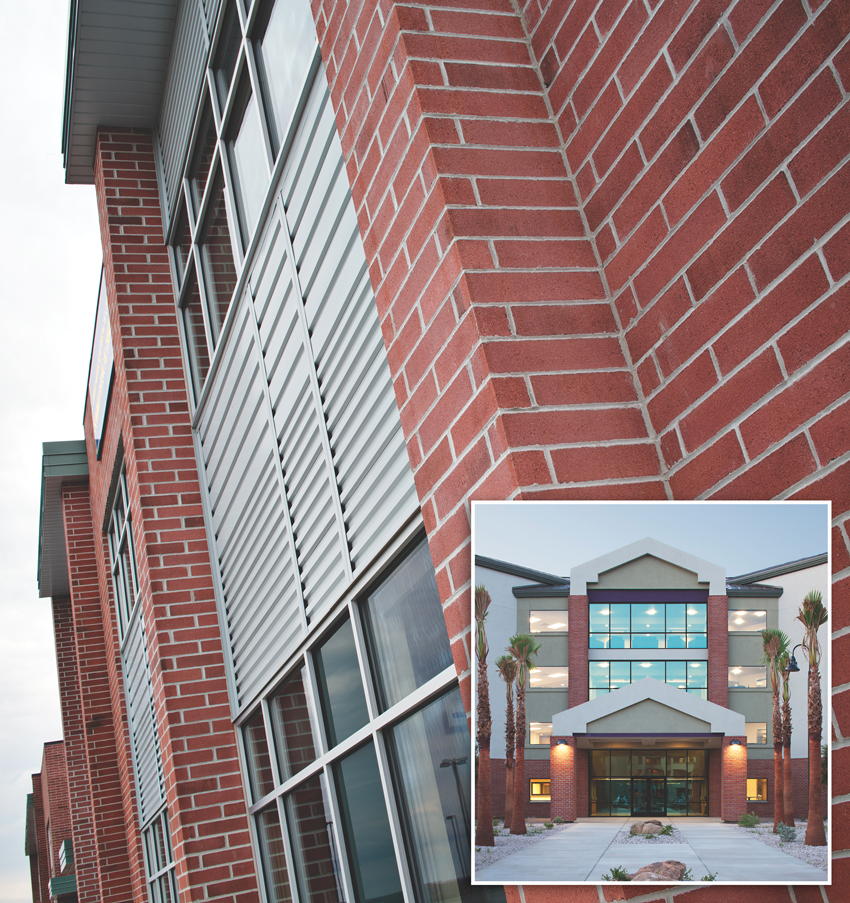Masonry and LEED v4
Solutions Best Suited to Meet LEED v4 Requirements
With sustainable building and a more rigorous LEED rating system, manufacturers are continually developing innovative solutions that provide architects with increased performance and aesthetic benefits coupled with ease and efficiency of installation. A systems approach that incorporates several elements for a total cladding solution is increasingly being adopted in the construction industry, as these products offer considerable efficiencies as well as installation and cost saving advantages, contributing to the sustainability of the product and compliance with evolving codes. One critical area systems have an advantage is installation. Proper installation is vital to the effective functioning of any wall assembly, and installing wall assemblies with numerous elements can be time consuming, costly, and prone to error. As a single-pass installation, these all-in-one products simplify the process, eliminating the need for adding insulation, moisture management, and finishing materials, saving associated labor costs and improving accuracy.
Several masonry systems are discussed below.

Insulated concrete masonry systems can have R-values of more than 16.
Insulated Concrete Masonry Systems (ICMS)
The ICMS is comprised of a preassembled structural masonry unit (CMU), molded expanded polystyrene (EPS) insulation insert, and thin veneer face. It is installed as a complete assembly and is fully thermally broken. Some ICMS utilize proprietary EPS foam insulation material, which has been shown to be the best performer among rigid foams in retaining the least amount of moisture—a situation that favorably impacts thermal performance.1 In terms of moisture management, some closed-cell foams like EPS have a Class III Vapor Permeability rating of between 2.5 and 5.5 perms depending on thickness and density, meaning that this type of continuous insulation is more permeable to water vapor, reducing the likelihood of mold, mildew, and structural damage. ICMS with stainless steel ties offer protection in various extreme situations. Because it does not readily corrode, rust, or stain with water as does ordinary steel, stainless steel anchors can be effective in salt water or coastal environments. Another moisture protection advantage in these systems is the fact that horizontal gaskets have drainage holes to channel water down and away from the building, which is particularly useful as the building ages and water infiltrates cracks in the mortar.
ICMS systems provide the designer with flexibility as it is adaptable in size, shape, and density, which eliminates the need to glue together multiple boards to achieve the desired insulation thickness—a characteristic that enables designers to achieve R-value targets in a thickness-constrained application. As codes evolve and R-value targets become ever more stringent, ICMS is considered perhaps the best opportunity to easily adapt, as a slight increase in insulation thickness can provide the necessary thermal performance.
Foam Panel Systems
Another energy-efficient option is a foam panel system. These systems are relatively new to the market and provide continuous insulation (CI), which is important because whenever a layer of insulation is interrupted, its effective R-value is reduced. The systems consist of three primary elements. Foam insulation panels that include premolded cells on the outside face form the pattern for installing masonry units. Specially designed anchors secure the foam panels solidly to the wood, steel, or concrete masonry structure of a building. Second are the actual masonry units, which insert easily into the cells of the foam panels for quick installation, and can include stone, clay, concrete brick, or other options. Third is mortar, with some products using a preblended, proprietary mortar that complies with ASTM C270 and enhances pumpability, bond strength, flexibility, and dimensional stability. Moisture management is built into the foam system as drainage channels on both sides of the panel divert any moisture that has penetrated the wall downward and away from the structure so there is no buildup of water within the panel system. These systems also attain R-value targets that create energy savings and reduce heating and cooling costs with minimum thickness. The layer of continuous insulation outside the framing yields R-values as high as R-13.1. An independently conducted ASTM C1363-05 Thermal Performance Test determined the R-value of certain foam systems to be as high as R-9.2 steady state, which is equivalent to an R-19.2–20 when taking into consideration the thermal mass benefits of all system components. A key attribute of foam systems, in fact, is their ability to reduce energy cost more than any other cladding system, with an unmatched R-9.2 steady state insulation value.

Source: ASHRAE Handbook of Fundamentals, ColoradoENERGY.org and Vinyl Siding Institute Inc.
High-performance foam systems can have an R-value of more than 9.
Foam systems pay substantial dividends in other areas as well. Some systems have been proven to resist wind speeds of more than 140 miles per hour. They can also have an STC rating of 61 dB when tested in accordance with ASTM E90d, which is not only desirable particularly in multifamily structures but meets new acoustic requirements prescribed in LEED v4. In rigorous fire testing per NFPA 285 and ASTM E119 standards, foam systems have proven their ability to be used over any exterior-rated assembly without changing the assigned hourly rating, allowing compliance with a 2-hour rating.
Integral Water Repellent Admixtures in Block and Mortar
Another effective masonry system is one with an integral water repellent. Manufacturers now offer water repellent admixtures in both block and mortar which, if used together, offer superior moisture control and protection against all types of moisture infiltration.
Because untreated concrete masonry units typically absorb water through capillary suction or wicking, the anti-wicking action of an integral water repellent will minimize the amount of water absorbed and enable any water that has breached the surface to drain toward flashing and weep holes. No film forms on the surface of the masonry as a result of the integral water repellent, nor is the unit impervious to moisture, which means the masonry remains breathable.
The newer polymeric admixtures have shown a better bond between units and mortar, though the air content has varied by manufacturer. High air content in mortar lowers the compressive strength and can reduce the bond between units. Low air content, by contrast, reduces the freeze-thaw resistance of mortar. Polymeric admixtures also provide a denser, more uniform unit as well as moisture control and limited risk of efflorescence. The admixture is incorporated at the plant, ensuring even distribution throughout the concrete mix. Especially effective in lightweight concrete masonry units and single wythe construction as added protection against water infiltration and wind-driven rain, an integrated water-repellent agent assures design professionals that the product will be executed as specified and in the proper proportion for maximum protection.
While an integral water repellent minimizes moisture in a building, the joints are still susceptible to water infiltration—a reality that necessitates an integral water repellent in both masonry units and mortar for full protection. Integral water repellent mortars are available in liquid and powder form, with the liquid admixture applied on-site at the mixer. Powders are typically found in preblended mortars. Each type of mortar is available in Type M, S, and N compressive strengths in compliance with ASTM C270 and is engineered as a preblended mortar for consistency, workability, and yield, providing factory-controlled mixes, batch to batch, compared to field-mixed mortars. In addition to creating a superior bond, these mortars can be formulated for extended board life, eliminating retempering in hot or windy conditions. Board life is a job-site-related term used by masons to define the working time of the mortar and for them to assure a proper application. Jobsite conditions, such as high ambient air temperatures, sunlit walls versus walls in the shade, windy conditions, etc., may affect the board life, depending on the overall performance or water retentivity of the mortar. In the event that the board life is reduced by job-site conditions, retempering, which is the addition of water to the remaining mortar in the mixer or mortar pans, is permitted once during the plastic stage. However, retempering of colored mortar may affect the final color. Specially engineered mortar mixes with integral water repellents have been formulated for such special applications as high-moisture environments, coastal climates, historic renovation projects, or where cement based mortar is the preferred material.

Masonry with integral water repellent mortar after 72 hours.
In results of testing conducted by the National Concrete Masonry Association, the most advanced preblended mortar products have demonstrated up to an 8 percent increase in flexural strength, significantly decreased resistance to water absorption, and a nearly 50 percent longer board life than untreated mortars. Other specifications for masonry products with integral water repellents include the following:
- ASTM C91: Standard Specification for Masonry Cement
- ASTM C150: Standard Specification for Portland Cement
- ASTM C207: Standard Specification for Hydrated Lime for Masonry Purposes
- ASTM C1714: Standard Specification for Preblended Dry Mortar Mix for Unit Masonry
- ASTM E514: Standard Test Method For Water Penetration And Leakage Through Masonry
- TMS 602: Specification for Masonry Structures










